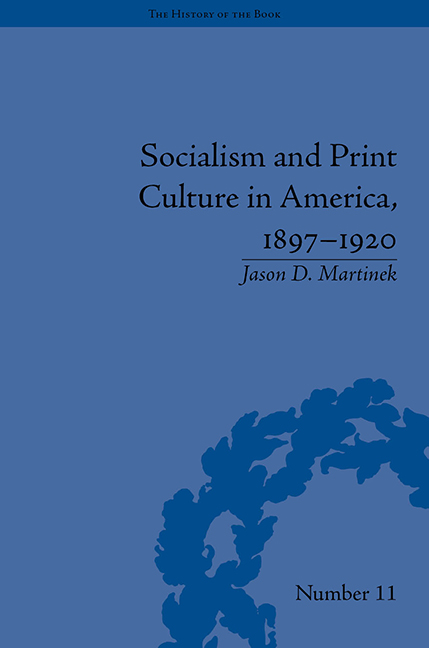Book contents
- Frontmatter
- CONTENTS
- List of Figures and Tables
- Acknowledgements
- Introduction: ‘Workers of the World, Read!’
- 1 ‘The Workingman's Bible’ and the Making of American Socialism
- 2 Charles H. Kerr & Company and the Americanization of Marxian Socialism
- 3 Activist Readers and American Socialists' Print Culture of Dissent
- 4 How the Socialist Party Created a Print Culture of Dissent without a Party-Owned Press
- 5 Information Management and the Socialist Party's Information Department and Research Bureau
- 6 Annotations on the Failure of Socialism in America
- 7 Conclusion: What a Book Cannot Do
- Notes
- Works Cited
- Index
6 - Annotations on the Failure of Socialism in America
- Frontmatter
- CONTENTS
- List of Figures and Tables
- Acknowledgements
- Introduction: ‘Workers of the World, Read!’
- 1 ‘The Workingman's Bible’ and the Making of American Socialism
- 2 Charles H. Kerr & Company and the Americanization of Marxian Socialism
- 3 Activist Readers and American Socialists' Print Culture of Dissent
- 4 How the Socialist Party Created a Print Culture of Dissent without a Party-Owned Press
- 5 Information Management and the Socialist Party's Information Department and Research Bureau
- 6 Annotations on the Failure of Socialism in America
- 7 Conclusion: What a Book Cannot Do
- Notes
- Works Cited
- Index
Summary
Ever since Werner Sombart first asked the question, ‘Why is there no socialism in America?’ in 1906, scholars have been persistent in their search for answers. Historians have posited two general explanations for socialism's failure. On the one hand, there have been the historians who have blamed the failure of American socialism on its inconsequential impact on the real world of party politics. From Louis Hartz's pronouncement that if socialism was to be found at all in the United States it was in the ‘wilderness’ of America's crudely oppressive liberal society to Daniel Bell's verdict that socialists ‘lived in but not of the world’ to John Patrick Diggins's assertion that the ‘idea of the proletariat, as the agency of historical transformation, as the ascending class that enables the radical intellectual to maintain a dynamic contact with the masses, lives and dies in the mind of the Left’, these scholars have emphasized the inability of socialists to challenge effectively the dominant discourse of power – liberalism. By defining liberalism as the only ideational glue that has bound all Americans together since the nation's founding, Hartz homogenized the American experience into one where individual liberty, equality and capitalism became the solid bedrock upon which a uniquely American culture was both built and maintained – a culture in which socialism, organized or otherwise, never had a chance.
- Type
- Chapter
- Information
- Socialism and Print Culture in America, 1897–1920 , pp. 115 - 134Publisher: Pickering & ChattoFirst published in: 2014



